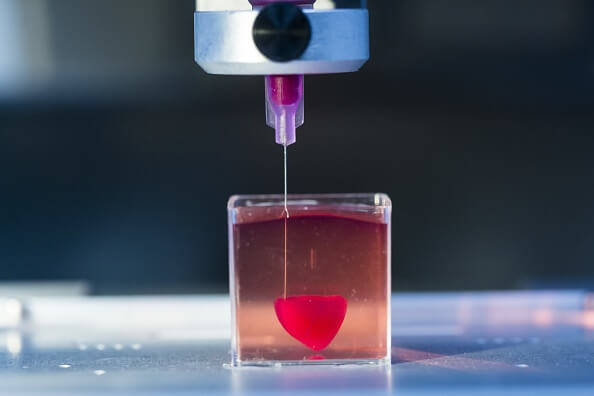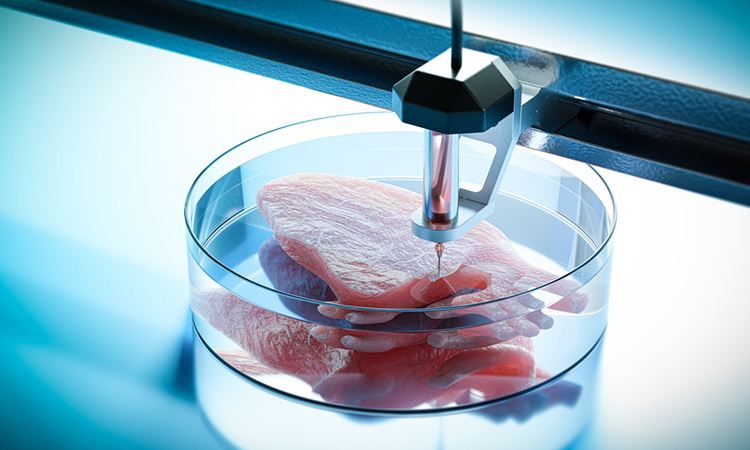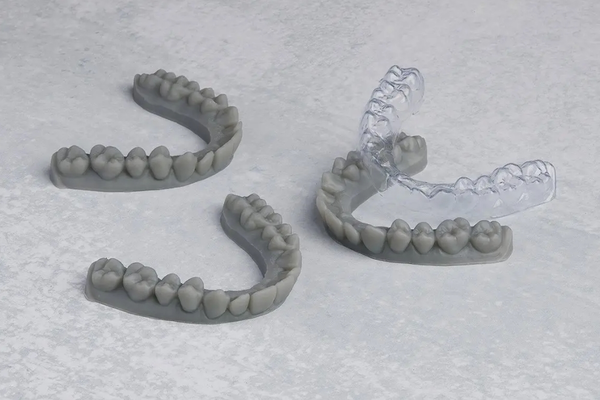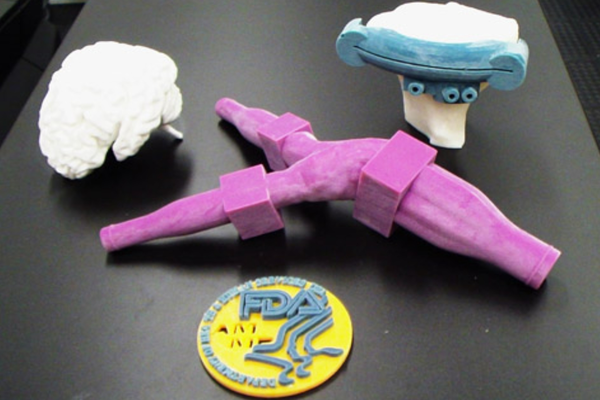What are 3D-printed organs?
3D printed organs are at the forefront of biomedical engineering, blending the precision of 3D printing with the complexities of human biology. These are artificial tissues or organ constructs created using a process known as 3D bioprinting. The technique involves layer-by-layer deposition of bioinks—materials that are biocompatible and often contain living cells—to build up structures that mimic the natural composition of human organs.
3D printing organs start with the collection of a patient’s cells, which are multiplied in a lab to create a sufficient quantity for printing. These cells are mixed with a hydrogel to form a bioink. The bioprinter carefully deposits this bioink, following a digital blueprint, to construct the organ layer by layer. The structure, known as a scaffold, supports the cells as they grow and mature into functional tissue.
The ultimate goal of 3D printed organs, such as 3D printed heart, is to replicate the function and structure of natural organs so closely that they can be used for transplantation, potentially alleviating the shortage of donor organs. While the technology is still in its developmental stages, it holds immense promise for the future of medicine and organ replacement therapy.

Image Source: Sculpteo
3D Bioprinting Insights
3D bioprinting offers a unique approach to creating complex biological structures, which can be used for a variety of medical applications, from organ transplants to personalized medicine.
One of the most exciting aspects of 3D bioprinting is its potential to address the critical shortage of organ donors. By using a patient's cells, 3D bioprinting aims to 3D print organs that are fully compatible with the recipient's body, reducing the risk of rejection and the need for lifelong immunosuppression.
However, the technology has its challenges. Human organs' complexity, with their intricate networks of blood vessels, nerves, and specialized cells, makes them incredibly difficult to replicate. Moreover, ensuring the survival and integration of printed tissues within the body remains a significant hurdle.
Despite these challenges, researchers are exploring the use of smart and responsive materials that can change shape or properties over time, leading to the development of 4D bioprinting. This emerging field adds the dimension of time to 3D printed human tissue and structures, allowing them to evolve and adapt post-printing, which could be crucial for creating more dynamic and functional tissues.
It is expected that 3D bioprinting will become an integral part of medical treatment, offering new hope for patients awaiting organ transplants and opening up new possibilities for the study and treatment of diseases. The journey toward fully functional 3D printed organs is long and complex, but the insights gained from current research are paving the way for a future where organ shortages are a thing of the past.

Image Source: Drug Target Review
Pros and Cons of 3D-printed Organs
3D printing of organs for transplant are a beacon of hope in the medical field, offering solutions to some of the most pressing challenges in organ transplantation. However, like any emerging technology, it comes with its own set of advantages and limitations.
Pros
1. Reduced Waiting Times: With 3D printed organs, the long wait for a compatible donor could be significantly shortened, potentially saving countless lives.
2. Personalization: Organs can be tailored to the patient's specific anatomical and cellular characteristics, reducing the risk of rejection.
3. Ethical Benefits: It could reduce organ trafficking and eliminate the need for animal testing.
4. Research and Education: Provides an invaluable tool for medical research and education, allowing for the study of disease and the development of new pharmaceuticals.
Cons
1. Technical Challenges: The complexity of replicating the intricate structures of organs, such as vascular networks, remains a significant hurdle.
2. Biocompatibility: Ensuring that the printed organs function correctly and are not rejected by the body is still a major area of research.
3. Cost: The technology is expensive, which could limit accessibility and availability, especially in its early stages.
4. Regulatory Hurdles: Legal and ethical considerations regarding the use of bio-printed organs must be thoroughly addressed before they can become a standard treatment option.
The journey towards fully functional 3D printed human organs is fraught with challenges, but the potential benefits are too significant to ignore. As research progresses, many of the current drawbacks will likely be overcome, paving the way for a future where organ scarcity is no longer a barrier to saving lives.
Are we close to 3D printed organs?
The quest to create 3D printed organs has been a topic of intense research and debate. While the idea of printing fully functional organs for transplantation may sound like science fiction, significant strides have been made in the field of 3D bioprinting.
Experts in the field suggest that it could be a couple of decades before we can manufacture usable hearts and lungs for transplantation purposes. The first successful transplant of a 3D printed organ, a bladder, occurred in 1999 and has been functioning for over two decades. This milestone demonstrates the long-term viability of 3D printed organs.
Currently, the most promising developments are in the creation of organoids, or “mini-organs.” These are small-scale, functional replicas of organs made from self-organizing cells produced in vitro. Researchers have successfully created brain, kidney, and heart organoids in petri dishes, with the hope of scaling them up to full-size, viable organs for transplantation.
Clinical trials are also underway for simpler structures, such as ear prosthetics made from a patient’s cells. These trials are crucial for understanding the regulatory pathways and tests needed for new therapies.
However, printing complex organs like lungs and hearts remains a significant challenge due to their intricate structures and the need for precise vascularization. The consensus among scientists is that transplanting life-sized, complex 3D printed organs into humans is still about 20 to 30 years away.
In summary, while we are not yet at the point where 3D print organs are a common medical treatment, the progress in the field is promising. The timeline for when these organs will be readily available is uncertain, but with ongoing research and clinical trials, the future looks hopeful. The advancements in 3D bioprinting continue to bring us closer to a time when organ shortages will no longer be a critical issue in medicine.
Have 3D printed organs been used in real life?
The Wake Forest Institute for Regenerative Medicine achieved the first implant of a 3D-printed organ into a human in 1999: a bladder.
Since then, there have been several notable advancements:
In 2002, researchers at the same institute 3D printed a functional kidney.
More recently, in 2019, Israeli researchers successfully 3D bioprinted a miniature heart capable of contracting, complete with a blood vessel network.
3D printed skin has been used for burn victims and cosmetic testing, reducing the need for animal testing.
However, it’s important to note that most of these applications are still experimental and have not yet become standard medical practice.
The Future of 3D Printed Organs
Technological Advancements
Continuous improvements in bioprinting technology will enable the creation of more complex and life-like organs, moving beyond simple tissues to fully functional organ systems.
Personalized Medicine
The ability to create organs tailored to individual patients will revolutionize transplant medicine, offering custom solutions and reducing the risk of rejection.
Ethical and Legal Frameworks
As the technology matures, ethical and legal considerations will be addressed, establishing guidelines for the use of 3D-printed organs in clinical settings.
Research and Collaboration
Multidisciplinary collaboration between engineers, biologists, and clinicians will drive innovation, leading to breakthroughs in organ bioprinting.
Public and Private Support
Increased funding and support from both public and private sectors will accelerate research and development, bringing 3D printed organs closer to reality.
Regenerative Medicine
The field of regenerative medicine will expand, with 3D printed organs playing a crucial role in repairing and replacing damaged tissues and organs.
In conclusion, while challenges remain, the progress in 3D bioprinting suggests a future where organ shortages are no longer a life-threatening issue. The integration of advanced materials, stem cell science, and artificial intelligence will likely lead to a new era of medical treatments. The journey is complex and requires careful navigation through scientific, ethical, and regulatory landscapes, but the destination promises a new dawn in the healing and preservation of human life.
Check out Our Special Offers
Featuring Process
- Coming Soon
Featuring Materials
- Coming Soon






















